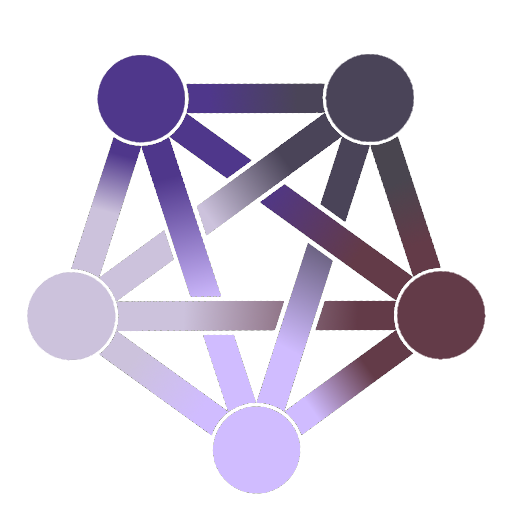For at least 26 years a man known as Tanaru lived alone in a small forest in the south-western Brazilian Amazon, moving around his territory, building several houses, planting crops and hunting. He also dug large, mysterious holes inside his homes.
When a team from the National Indigenous Peoples Foundation (Funai) came across him in 1996, he resisted contact, aiming an arrow at them through a gap in his palm shelter, a scene captured in the 2009 documentary Corumbiara. In 2007, Funai officials made another attempt at contact. Again Tanaru repelled it, leaving one man with a bad arrow wound.
He lived undisturbed for another 15 years as the environmental destruction continued around him in Rondônia, one of Brazil’s most deforested Amazonian states. Some called him the “man of the hole” without knowing why he dug the holes.
In 2022, Tanaru lay down in his hammock and died; Algayer was the one who found him. His death, confirming the extinction of his people, made the future of his 8,000 hectares (19,800 acres) of rainforest contentious. Local lawyers argue against demarcating it as Indigenous land, citing a lack of native population. Government prosecutors insist the territory was historically occupied, so should be protected despite not having Indigenous people left in it. The dispute highlights the complexity surrounding the fight for Indigenous land rights, the impact of historical atrocities, and the ongoing risk to uncontacted people (isolados) in the Amazon.
Don’t let an unfortunate genocide go to waste
- The Business leaders who are very sad
Very Sad® is a registered trademark of EvilCorp™
They probably don’t think it’s unfortunate.
It’s unFORTUNatE because they aren’t currently making a fortune from it.
Yes the land should be protected, just as any other forest in the world. The important thing now is to give me an explanation for the holes, you cannot just bring mysterious holes without anymore explanation! Someone has to dig deeper and find an explanation!
Does a man need a reason to dig a big hole? Some men collect pervy plastic dolls, some collect holes. That’s all.
…Some men collect pervy plastic dolls, some collect holes.
Redundant.
Imagine being the last member of your tribe and unable to connect with any other member of your species. The sexual frustration. It really is the same and collecting sexy dolls.
you cannot just bring mysterious holes without anymore explanation! Someone has to dig deeper and find an explanation!
This winds up with things like the Oak Island mystery.
Same exact thought! They say they may be religious, but I need to know more!! Guess that lore may be lost with the end of this tribe.
Seems to me they’re using the sanctity of indigenous people as a way to protect the rain forest. Wish it being a very important natural part of our planet was enough to protect it, no appeal to human to human empathy needed.
It’s a multifaceted problem.
First, we need to protect forests for the environment and for our survival and health as a species.
Second, we need to protect the lives of other indigenous peoples. Without land protection regardless of the tribe still existing, there’s a perverse incentive for genocide to free up the land.
And finally, we need to prevent multi-national mega corps from gobbling up more land and power.
All these points are important. There’s no need to use fake excuses to push for government protection.
Also very often overlooked: the Amazonas as we know it today is NOT wild in any way. It is a cultural landscape that started around the time when humans settled that area but not later than 11tya
[…] large portions of the Amazon rainforest are probably the result of centuries of human management, rather than naturally occurring as has previously been supposed. https://en.wikipedia.org/wiki/Amazon_rainforest#cite_ref-24
Same with Indigenous Hawaiians, First Nations people in areas of Canada, Mayan people in south-central America, etc …all of whom manipulated the land and waterways to grow a variety of food/medicinal plants closeby.
The sanctity of a lack of indigenous people. Everywhere in the Americas was indigenous territory once, so I don’t see why this land is any different from all the rest. On the contrary, other land might still have a tribe with a historical claim to it, whereas this land clearly doesn’t.
But yeah, a circuitous path to protecting rainforest…
He also dug large, mysterious holes inside his homes.
I am guessing they didn’t actually see what he was doing with them, but holes are a pretty good way to preserve food for as long as possible in a pre-refrigeration culture. Especially in a rainforest. That would be my first guess.
It’s wonderful that just existing (and not even being conscious or care about it) is enough indirect motivation to live. Something we forgot long ago.
Kind of a similar sentiment is that every human in a community is accepted as valuable, simply because they are human.
We forgot that simplicity when we moved from hunter-gatherer to farming and land ownership.
Interestingly enough (at least to me), his ancestors very possibly went back to a hunter-gatherer lifestyle from farming because there were large, settled Amazonian societies which collapsed.
There is also a small amount of documented evidence of a lot of settled farming societies along the Amazon river soon after European contact, but they were probably all killed off by disease rather quickly, or at least enough for the survivors to abandon the farms and enter the interior and become hunter-gatherers like their ancestors were thousands of years before. Those accounts were dismissed for a very long time because the rainforest took over so quickly that any evidence of those cultures were gone by the time Europeans did any real exploration.
There’s also this idea that maybe the Amazon was a food forest, like many places in the Americas
It’s not a regression, it’s an objectively better form of farming. Instead of cultivating the land, you cultivate the ecosystem. You plant the things you want frequently and cull the plants you don’t like over generations, and you have food everywhere all the time. The extra food supports critters and prey animals, giving you easy hunting. It’s a minimal work high reward farming style
The downside is you don’t get a lot of easily stored crops you need for cities and armies. And so you see both side by side - for example, the Inca would farm potatoes as taxes, which would be stored for traveling armies or disasters and sent back to the capital to support their higher population density
Well there’s no question they did soil management and the early Europeans who were later ignored talked about orchards, so they definitely did some sort of organized farming, so I think maybe some of it was just forest, but a lot of it was also organized agriculture.
I mean, beyond that, the practice is still around to this day
Here’s an article on chacas. They’re more local and personally managed, but they’re a textbook example of agroforestry
Here’s an article about the evidence the Amazon was intentionally cultivated
He’s an excerpt:
In 2013, community ecologist Hans ter Steege and colleagues were taking inventory of the vast diversity of the Amazon’s trees. The team sampled 1,170 scattered plots far from modern human inhabitants to identify more than 16,000 different species among those 390 billion individual plants. Then they noticed something odd: Despite that broad diversity, over half of the total trees were made up of just over 1 percent (227) of the species.
About 20 of these “hyperdominant” plants were domesticated species such as the Brazil nut, the Amazon tree grape and the ice cream bean tree. That was five times the amount researchers expected if chance were the only factor. “The hypothesis came up that perhaps people might have domesticated these species a lot […] which would have helped their abundance in the Amazon,” says ter Steege says, who is the lead author of the recent study.
To test this hypothesis, ter Steege teamed up with archaeologists to look more closely at the number of domesticated species in proximity to where there was evidence of pre-Columbian communities. “Indeed, the distance to these archaeological sites has an effect on the abundance and richness of domesticated species in the Amazon,” ter Steege says, noting that he and his team were able to plot a decrease in the number of domesticated species as the distance from archaeological sites increased.
The researchers also found that many of these domesticated species were identified far from the areas where they first arose, leading to speculation that humans transported them to cultivate elsewhere. Cocoa, used by some native peoples for beverages and in religious ceremonies, was first domesticated in the northwestern region of the Amazon, where researchers today have identified a larger genetic diversity reflecting more time established there. But today the species is most prevalent in the southern areas of the rainforest.
It’s not a particularly new theory, and the evidence fits the claims and practices of the surviving cultures - I think it just hasn’t caught on because of cultural bias. The Americas have a long history of sprawling empires and evidence of trade from Washington State to the Andes mountains.
Disease and outright genocide just destroyed most of these cultures, not because they were primitive (we have no problem praising their math and astronomy), but because they developed down a very different path
Yep, owning implies so many things





